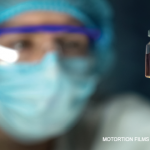The clinicians I had recruited were doing an excellent job, and so I could return to my first love—the laboratory. Those were the days before molecular medicine. It was hands-on, trial-and-error and intuition. Much depended on the talent of the laboratory assistant. (Morris Ziff got his start this way before going to medical school.) I was lucky enough to hire a young Israeli woman, Fela Polishuk, whose husband had accepted a two-year obstetrics and gynecology fellowship in New York. Thus, I was able to return to my study of the rheumatoid factor (RF). The test for RF began with the streptococcal agglutination reaction, which depended on the use of virulent organisms, and thus was not easily nor widely performed. However, in 1946, shortly after the end of the war, there was an epidemic of rickettsial pox in the borough of Queens, New York. Patients were subject to myriad tests. Among these was the sensitized sheep-cell agglutination reaction, which depended on the use of antibodies from a horse that had been injected with sheep blood. The horse serum was then coated on fresh sheep erythrocytes and tested with patient’s serum (using uncoated red blood cells as controls). It turned out that this test was was negative in all of the rickettsial-pox patients except for one. The one exception was a young woman named Elizabeth Pearce, who was a technician in the lab of Harry Rose, the chief of microbiology at Columbia University in New York. A bright and curious person, Pearce, who was performing the tests, wondered why she tested positive. Perhaps, she reasoned, it was because she had rheumatoid arthritis. Harry Rose, along with Charles Ragan, observed that over 50% of RA patients tested positive. It was this unexpected observation that interested me when I became first fellow and I devoted my laboratory time at Mount Sinai to the study of rheumatoid factor.
An interesting side note: Rose, Ragan, Olmsted, and Pearce reported their findings in 1948. Years later, it was discovered that, in 1940, Erik Waaler of Norway had reported similar results using sensitized sheep cells. While Rose and Ragan quickly acknowledged this, years later, while attending a festschrift for Waaler in Bergen, Norway, it was clear that he believed that Rose had “stolen” his work.
Horses, Sheep, and Paint
In my lab at Mount Sinai, I thought long and hard about rheumatoid factor. Medical thinking at the time was heavily influenced by the concept that the body was not capable of developing antibodies against itself—anti-antibodies—or what we now think of as autoantibodies. Many excellent immunologists believed they didn’t exist. I discussed this concept with the best immunologist I knew, my friend Henry Kunkel at the Rockefeller Institute, and he encouraged me to find a way to prove it. At the same time, my wife was trying to dissuade me from continuing my study of the sensitized sheep-cell test since it required that I travel to a farm, bleed a sheep, inject the blood into a reluctant horse, and return six weeks later to bleed an even more reluctant horse to procure the horse anti–sheep-cell antibodies. Then, the serum had to be separated, more sheep had to be bled, and then “sensitized” to the horse serum. There had to be an easier way.

